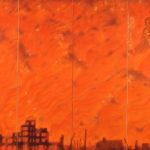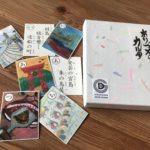It is time for us to learn the importance of peace and sacredness of life; Japan’s only “Holocaust Education Center”

“Why can’t people live peacefully together?”
These words were penned by Anne Frank, a young Jewish girl born in Germany, in “The Diary of Anne Frank”. In Europe during World War II, 6 million people were discriminated against, persecuted, and robbed of their lives in gas chambers simply because they were Jews. Among them, it is said that there were 1.5 million children.
Located in Fukuyama, Hiroshima Prefecture, the “Holocaust Education Center” is a facility where visitors can learn about the history and truth of the Holocaust (a genocide of Jewish people carried out by Nazi Germany), as well as the people who lived in that era. During this time, with increased feelings of anger and fear regarding the destruction of everyday life and indiscriminate slaughter such as the invasion of Ukraine by the Russian army, how about visiting this center and thinking once again about the importance of peace and sacredness of life? The director, Yoshida Akio, showed us around the center.
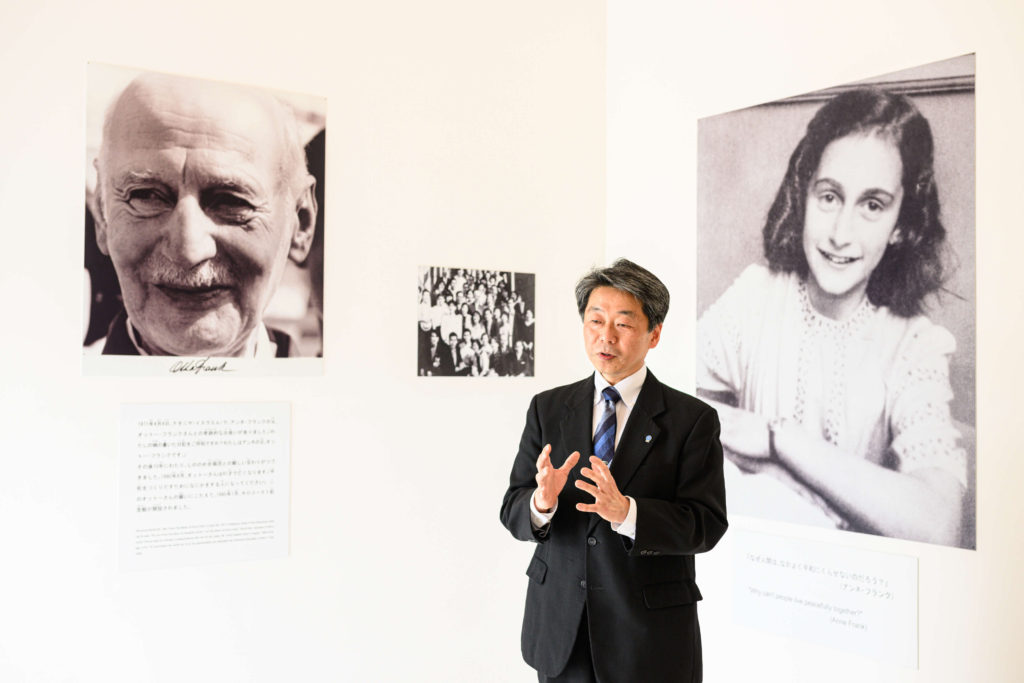
This center was opened as Japan’s first facility educating the public on the Holocaust in 1995, which marked 50 years after the war. What led to the opening of this center was the fateful encounter between the first director of the center, Otsuka Makoto, and Anne Frank’s father, Otto Frank. Apparently, in the spring of 1971, when Otsuka visited Israel as a member of a choir, the two men met coincidentally and the exchange between them started. Having been requested by Otto to “please become someone who does something to create peace instead of just pitying the 1.5 million children including Anne” and wanting to convey Otto’s thoughts to many Japanese people, Otsuka built this center on the grounds of Miyuki Church where he worshiped as a base for sharing peace. It was a small building, but many people were interested in it, and in 2007, the new center that had expanded its exhibition space to five times the original size opened. As of April 2022, about 190,000 people have visited it.

Visitors are first shown a video about this center in the hall. After that, they are guided to the exhibition room on the second floor. On the wall of the staircase is “Do not forget (the direction translation is ‘remember’)” in Hebrew. It expresses the desire for people to “not forget (remember) the children who were sacrificed in the Holocaust”.
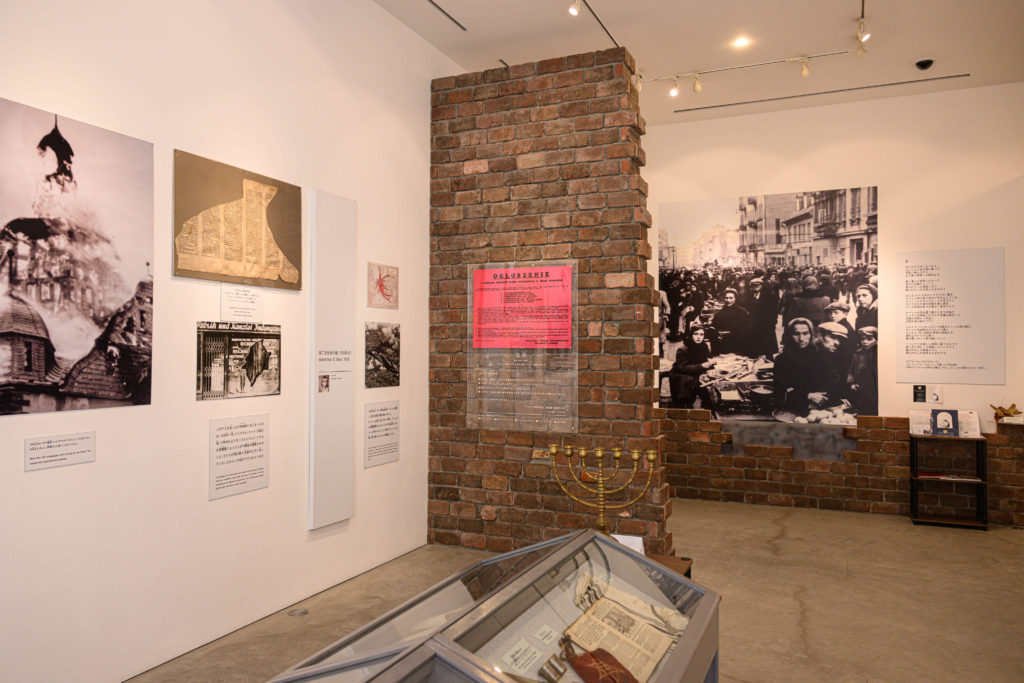
In the exhibition room, the yellow “Star of David” used as a symbol of the Jewish people, a torn bible, clothes and utensils used in the camps, and other valuable relics donated from 40 countries all over the world are displayed. In order to get the interest of children visiting the center, hands-on exhibitions using three-dimensional objects, such as the reenactment of a wall of a ghetto (a temporary residential area until the Jewish people were sent to the camps) and a diorama of Auschwitz concentration camp, Nazi’s largest-scale one, were created as well.
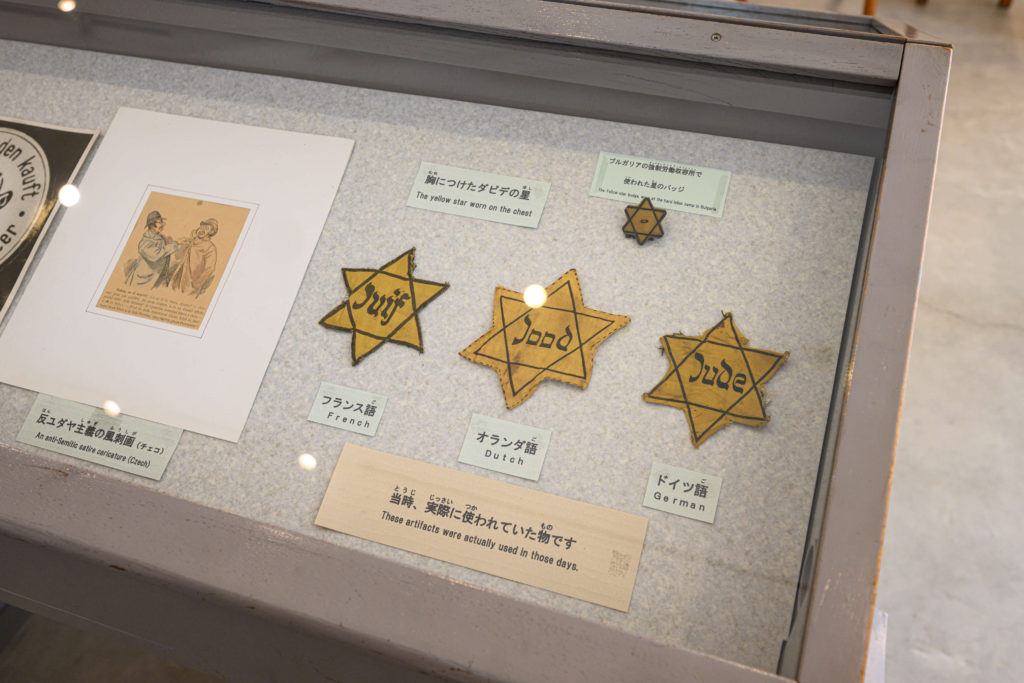
The Star of David that was really used at the time
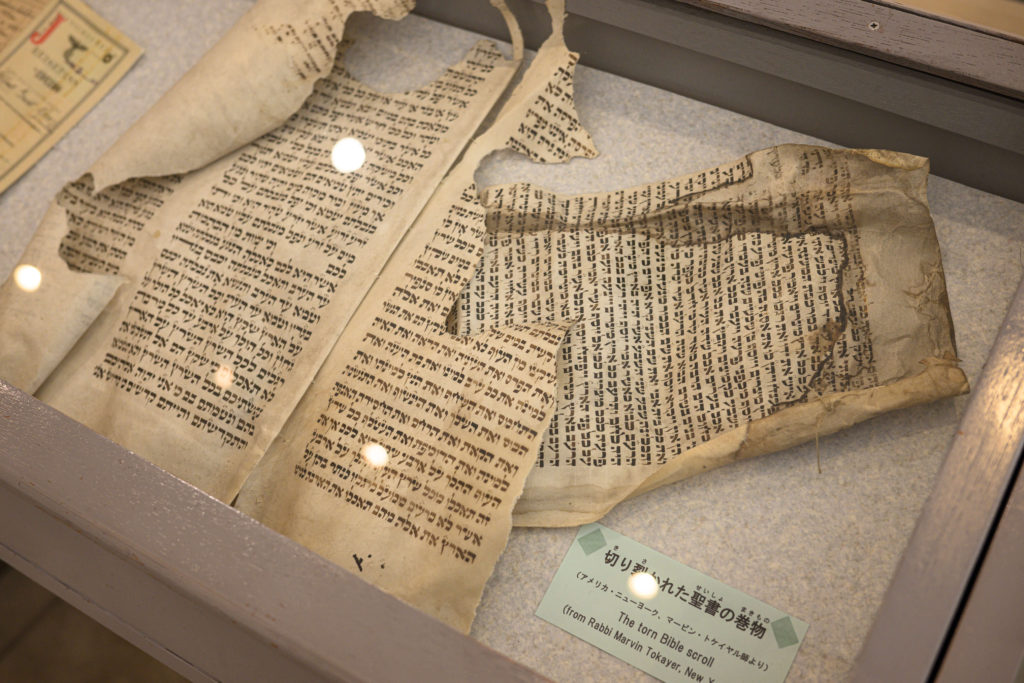
This torn bible is also from that time
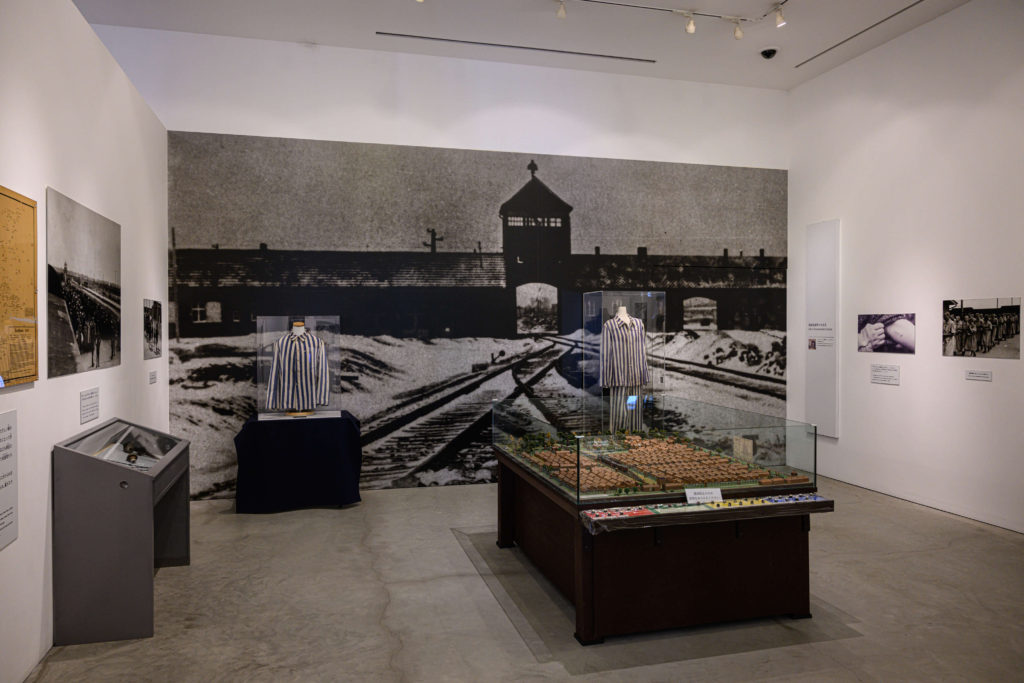
The diorama of Auschwitz concentration camp, the prisoner’s uniforms that the Jewish people were made to wear, and other exhibits related to the camps
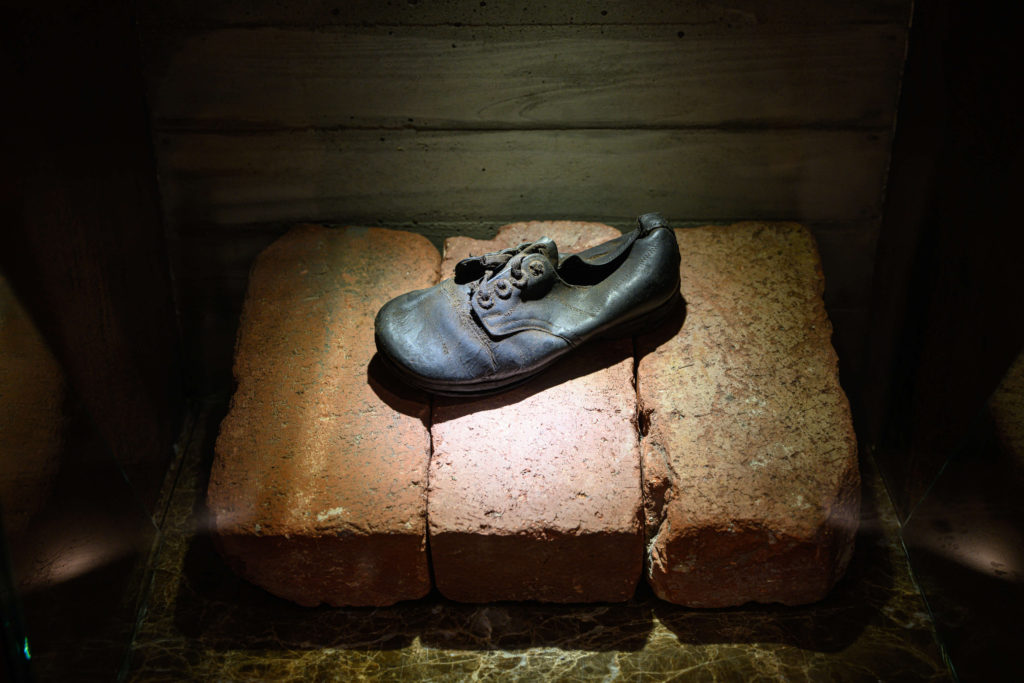
The memorial room is a place where visitors think about the sacrificed children and remain quiet. Please look at the stained “15-centimeter child’s shoe” that symbolizes the 1.5 million sacrificed children and stained glass facing the sky, remember the sacrificed children, and ponder “what we can do”.
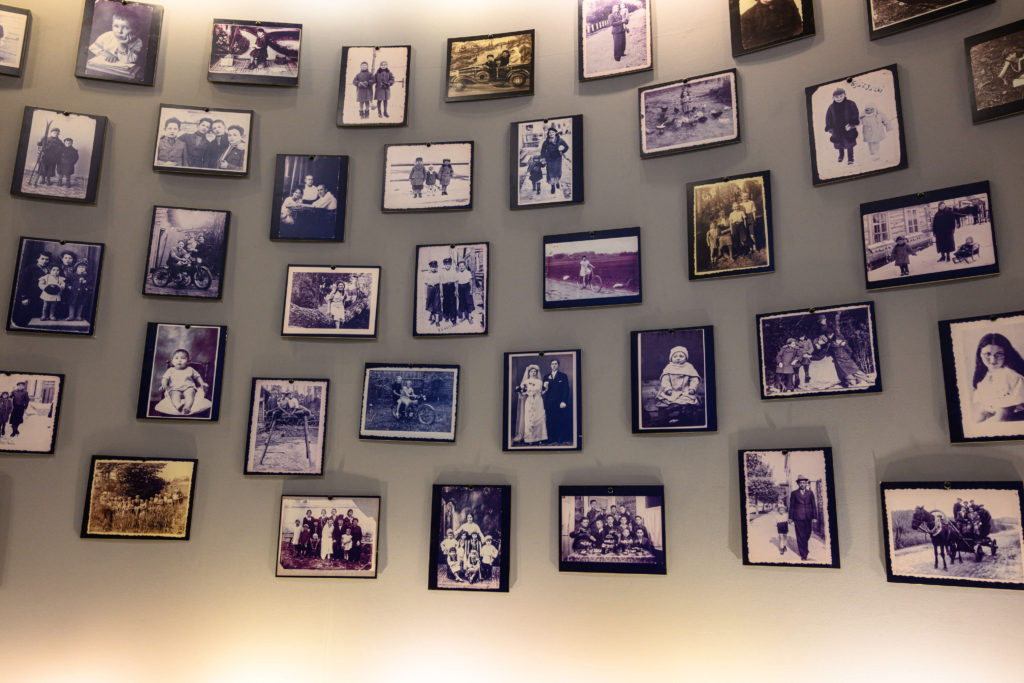
Photographs of the Jewish people from villages where massacres were carried out by the Nazis are displayed on the walls of the memorial room

The next destination is the exhibition room of Anne Frank at the end of the corridor. An exquisite replica of Anne’s diary, the same type of typewriter that Otto used, and other things related to Anne’s life and Otto are on display. At the back of the room is a space reenacting the room in which Anne hid in Amsterdam, the Netherlands. All throughout the day, in a dark room with the windows and curtains closed, from 13-15 years of age, Anne wrote in her diary. The children of the same age as Anne who visited this center say that “Anne’s room left a strong impression.”
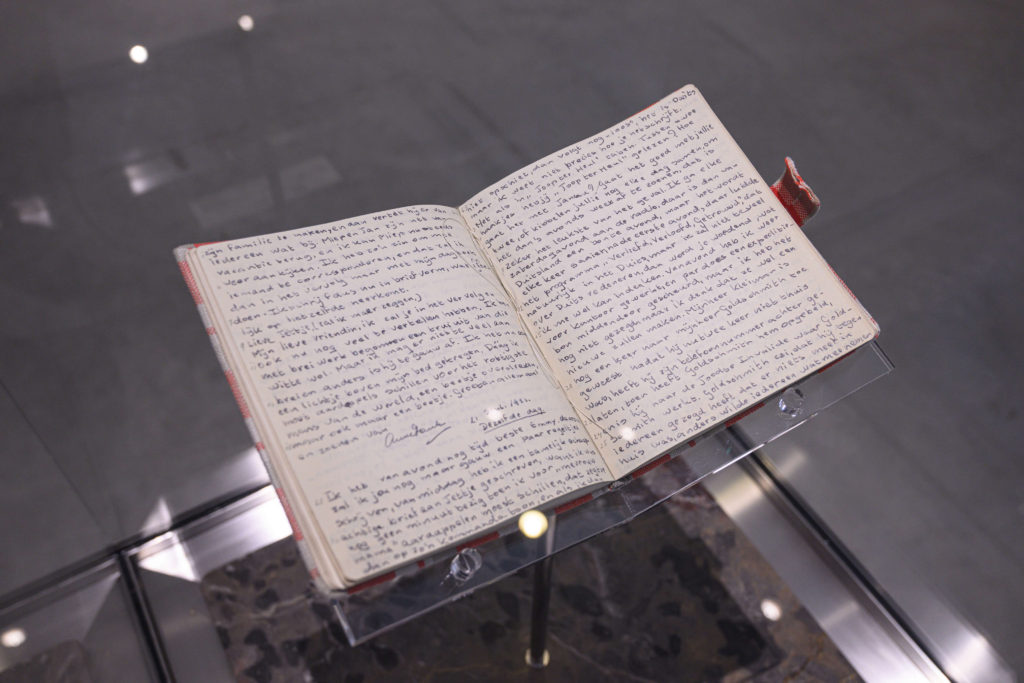
A replica of Anne’s diary
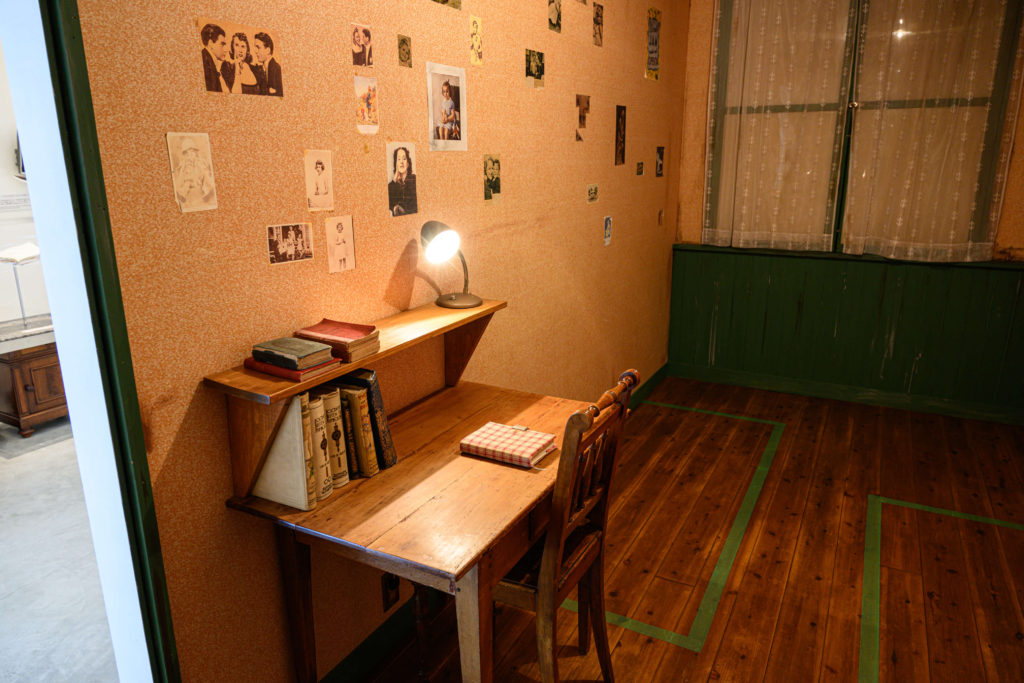
“Anne’s room”, reenacting the room where Anne hid
There are also many other highlights in the center, including a section introducing the contributions of Sugihara Chiune, a Japanese diplomat who saved Jewish refugees with a “visa of life”, a library where visitors can read books and watch DVDs about the Holocaust, a children’s room where children can freely learn, and Anne’s rose garden with roses gifted by Otto. Perhaps it is precisely because we are living in such times that this center will motivate us to think about peace. Please place yourself in this space and think, “What can I do to create peace?” Because instead of just learning with your brain, the things that you think about and experience will remain in your heart forever.
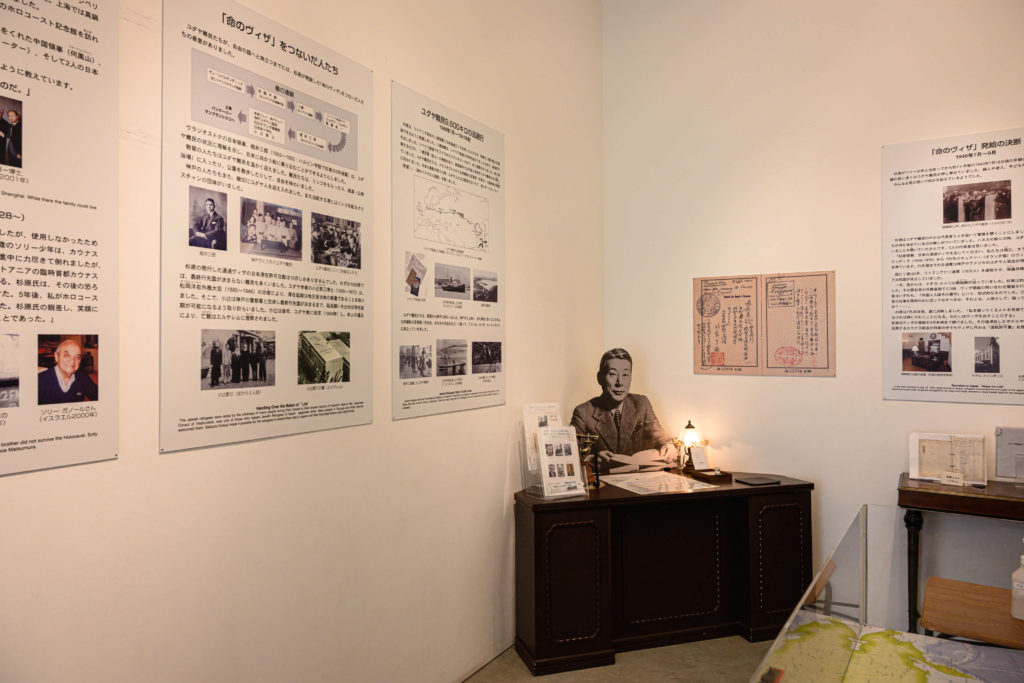
Panels that introduce Sugihara Chiune

“Anne’s rose garden” with the bronze statue of Anne as the focus
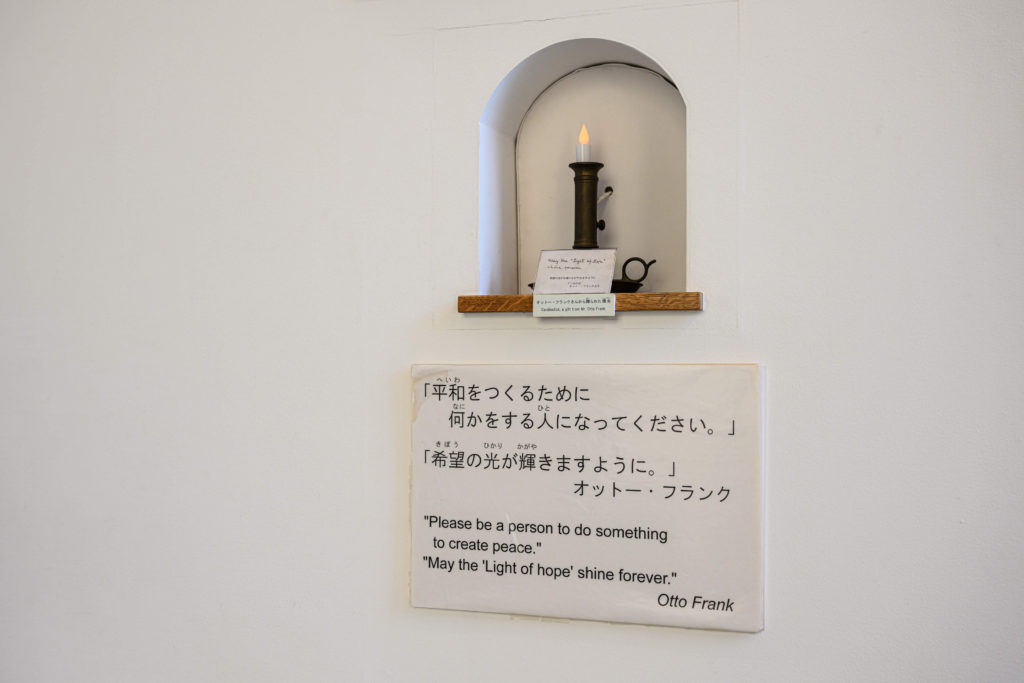
A candleholder and message gifted by Otto Frank
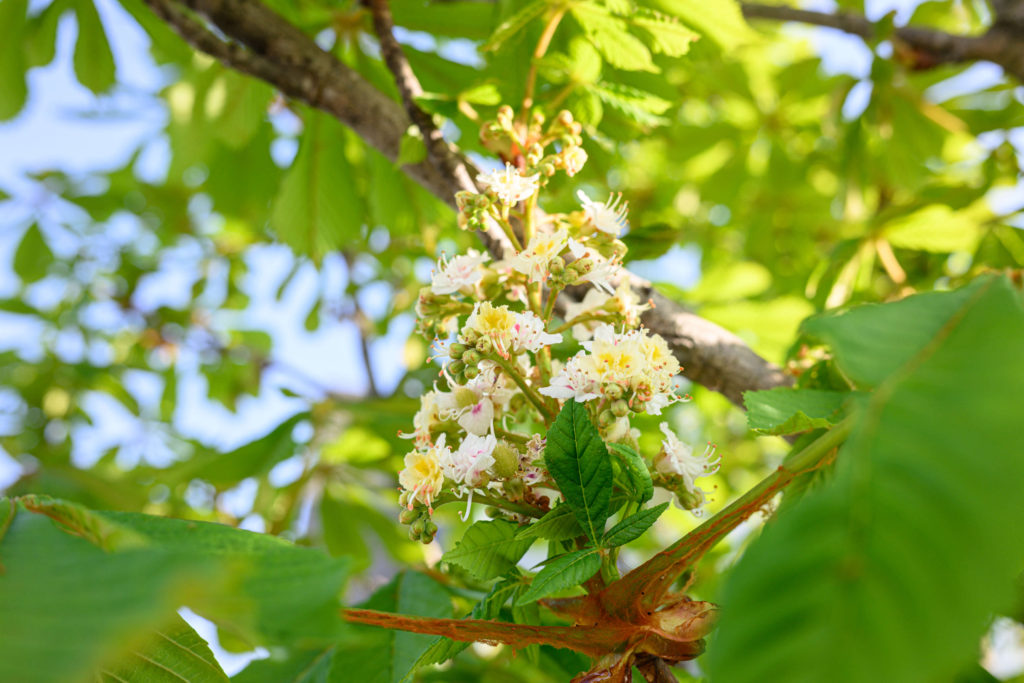
The second generation of the horse chestnut tree that Anne was said to have been able to see from her hideout, planted beside the entrance
Holocaust Education Center
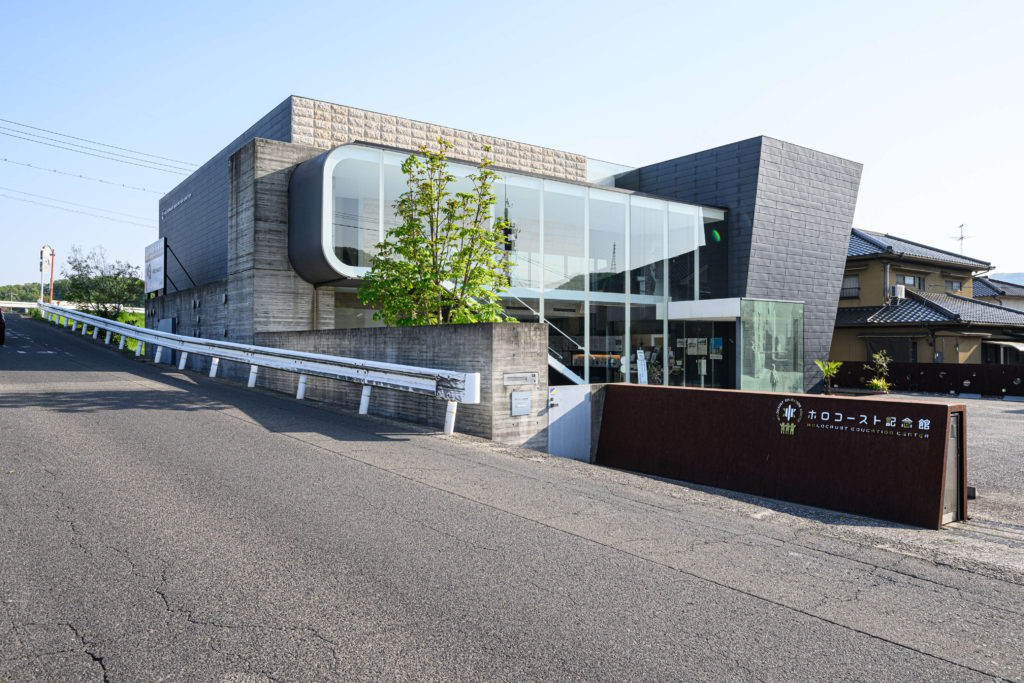
Telephone number: 084-955-8001
Address: Nakatsuhara-815 Miyukicho, Fukuyama
Opening hours: 10:00 a.m. to 5:00 p.m. (last entry at 4:30 p.m.)
Closed on: Sundays, Mondays, public holidays, August 13th to 16th, December 27th to January 5th
Entry fee: free to enter
Tags associated with this article



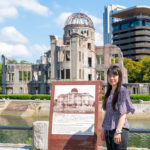
![[Interview] The Importance of Information in Peace and the Role of Information Companies [Interview] The Importance of Information in Peace and the Role of Information Companies](https://hiroshimaforpeace.com/en/wp-content/uploads/sites/2/2023/09/瀬尾様_プロフ.00-1-150x150.png)
